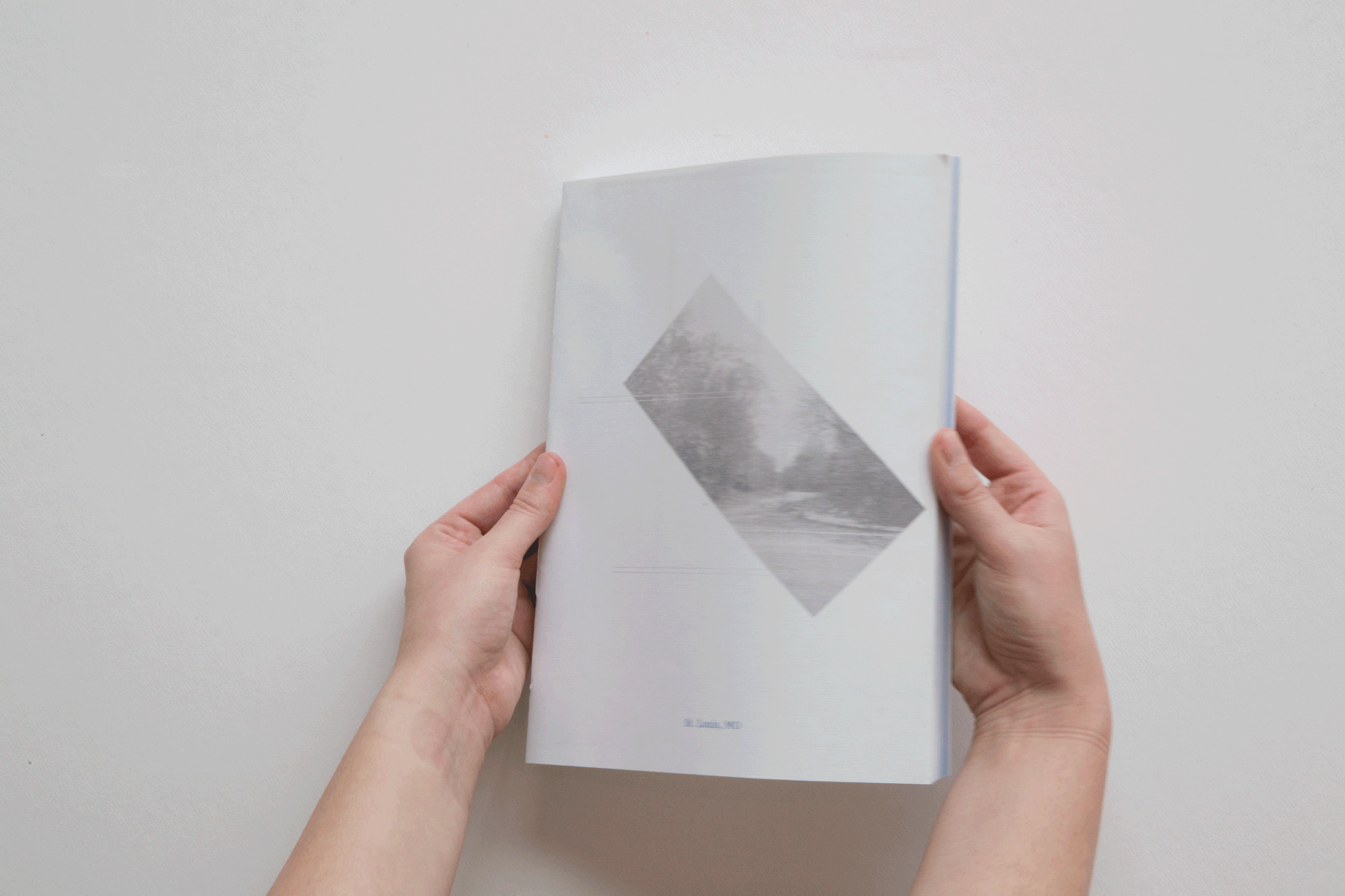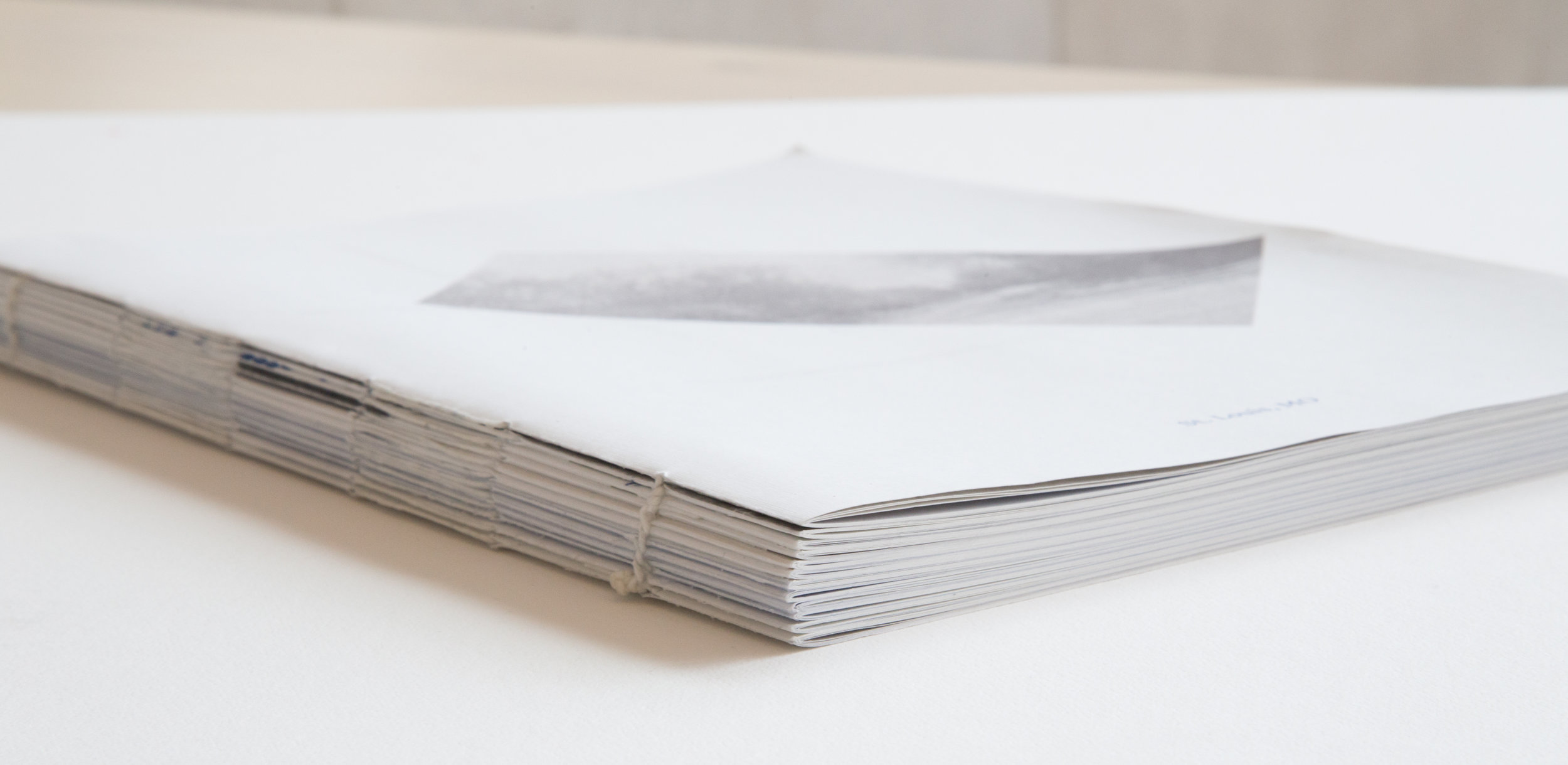
Narrative of Absence

Narrative of Absence is a design project that highlights text from Colin Gordon's book, Mapping Decline and two interviews with women who grew up a generation apart in North St. Louis from the podcast We Live Here. The text balances and juxtaposes both academic research on housing decline along with personal narratives. The book displays the factual with the personal, creating a more intimate narrative that highlights "feelings of remembrance and longing for what was once present but now empty.”
Law, Race, and Design
Feb 2020
In February 2020, I had the opportunity to join as a guest lecturer for Washington University in St. Louis’s class Law, Race, and Design, and shared important themes from my undergraduate senior capstone project, Narrative of Absence—a book designed as a way to reflect on issues of vacancy and housing segregation in St. Louis. I shared my experience researching and understanding my own relationship with space in St. Louis, and how to balance not placing myself into the storyline.
I spent a few minutes after class chatting with professors Penina Laker and John Inazu about the difference between living in St Louis and attending school in St. Louis.
Give our podcast a listen to find out more . .
Design

CAPSTONE PROCCESS
WEEK 1: Content Development and Idea Generation
I began with the idea of preservation. I wanted to show how a city, in particular St. Louis, has a unique history and collection of stories surrounding the many vacant buildings. After WWII, much of St. Louis's population–in particular White residents–left the urban centers, creating a city of ghost architecture and further divide (this is a very simplified statement on a complicated issue). My idea is to look at the stories of these ghost buildings and abandoned neighborhoods and how the racial divide of the city influences urban development.
At the heart of this project is a question: why does the city look and function the way it does?
Audience: My audience is those who want to be more educated on the stories of St. Louis's past. I understand that I, as a non-St. Louis native, present an outsider perspective on a complicated city history. Stories and locations I choose to highlight will reflect my bias. Ideally, this project is targeted towards individuals who are passionate about St. Louis history, urban design and architecture, and how stories and memories of places are archived. This project is not all-encompassing, but will hopefully open one's eyes to learning more about the past life of St. Louis.
Form: I intend to create a book which captures the memories and histories of what once was there, but now isn’t. I believe a physical artifact is important in capturing the disappearing memories of the topics that I will explore. The permanence of the printed object creates an importance and physicality to ideas and spaces that are in flux.
Content: Through the past few months, I have been reading and listening to content related to city design, St. Louis renovation, building preservation, and the affects of St. Louis segregation.
Podcasts:
White Flight and Reclaimed Memories
Episode 44: The Pruitt-Igoe Myth
Episode 283: Dollhouses of St. Louis
Articles:
New York Times: A Divided City
St. Louis Post: Chippewa Park Rehab
St. Louis Post: Revival on Chippewa
Prospect of National Geospatial-Intelligence Agency
Building on a Promise
Where are the oldest buildings in St. Louis?
How old is that Building?
Brick Theft in North St. Louis: A Preservation Crisis
Invisible Buildings: Photography, Memory and Architectural Destruction
Websites:
Preservation Research Office
Demolition Permits in the Last 30 Days
Civic Creatives
CityLab
Mapping Decline
Funeral for a Home
Where You Are
Washington University Capstones:
Emma Riley
Paul Cronan
WEEK 2: Content and Design Research
After the feedback I received from Week One, I knew I needed to clarify my intentions for this project. I decided that I did not want to have a case study on one particular neighborhood. I want this book to showcase a variety of locations and stories in St. Louis, not particularly one block's history. I have been looking at ways to categorize the information that I have gathered and the best way to present this. I plan on creating a book with different sections on Urban Development, poetry, and photography using articles from the St. Louis newspaper, the podcast We Live Here, Architectural plans created by Washington University in St. Louis Graduate Students, and the book Mapping Decline by Colin Gordon.
The St. Louis Post-Dispatch published a list in September of the 13 of the most endangered buildings and places in Missouri in 2017. This list is state-wide, but I plan on narrowing down buildings in St. Louis to use as an analysis on the greater issues at hand. Gordon presents a case study on 4635 North Market Street–vacant, abandoned, razed, and un-renewed–which is a poignant monument to the history of the modern American city, in this case St. Louis.
Further, the podcast We Live Here and the episode White Flight and Reclaimed Memories will serve as key text. Cheeraz Gorman recites her poem, "Who Moved My Memories," on the episode. Cheeraz reconciles with returning to her once-stable, idyllic, childhood neighborhood which these days is filled with vacant lots and the effects of institutional poverty. Christine Schmiz was also interviewed, and addresses her life living in North St. Louis and how her family moved from their home to south St. Louis County in the 1960s. In the past few years, Schmiz has sought to reconcile her feelings about her family's role in the wave of white flight.
Visual Research:
Mood Board and Inspiration
WEEK 4: Visual Testing & Content
This week was a turning point for research and process development. Due to the historical research involved in understanding St. Louis's complicated housing development, I understood that gathering research would be an unclear and complicated process that evolved as I learned and focused on different topics within St. Louis. I met with a Missouri Historical Society Archives Librarian, along with a Washington University Special Collection Liberian, and both strongly suggested that I narrow down and present a case study on a block and present the stories for the buildings and occupants. Both libraries have a plethora of information and documents available for me to study. I found myself slightly overwhelmed by the amount of information at hand. I decided to take the Librarians advice and narrow down my search to one single block. I will be focusing on the block that Colin Gordon's house case study is on, block number 4472 in the Greater Ville neighborhood.
I have updated my outline to include:
Dollhouses of St. Louis from 99% Invisible
White Flight and Reclaimed Memories from We Live Here
Case Study of the lot, 4635 Market Street, and block 4472
Additionally, I have just started reading through oral histories that were taken in the 1990s of elderly civilians growing up in St. Louis. I might be including aspects of these interviews as well.
WEEK 5: First Complete Draft
Listened to Colin Gordon's Lecture on campus on "Home Inequity: Race, Wealth, and home ownership in St. Louis
Finished first draft (100+ pages)
Guest critics reviewed draft and suggested placing myself in the storyline as an outsider to the city
Contact Curators of the Pulitzer shows: A Way, Away (Listen While I Say) and raumlaborberlin: 4562 Enright Avenue